An inside look at the Douglas County Juvenile Detention Center
A room inside the Douglas County Juvenile Detention Center (JDC). JDC serves 13 Northeast Kansas Counties. For $150 a day, the center can detain delinquents between the ages of 10-18 for up to 90 days.
6 a.m. Junior Adam Taylor* is awoken by a security guard’s crude knock. He rises groggily, as does his roommate, a former methamphetamine addict, incarcerated for almost beating someone to death. As they brush their teeth and hair, fold their blankets and slip into fresh pairs of sweatpants, the duo doesn’t speak. They aren’t allowed.
“You have to ask permission,” Taylor said. “You gotta ask permission for everything. You want to go to the bathroom? You gotta ask permission. You wanna get a drink, you gotta raise your hand. Or if you want to ask somebody something, you gotta raise your hand. It’s like that all the time.”
Douglas County Juvenile Detention Center (JDC) serves 13 Northeast Kansas counties. For $150 a day, the center can detain delinquents from other counties or those awaiting their court dates between the ages of 10-18 for up to 90 days. According to Detentions Operations Manager Casey Crane, the facility usually accommodates about 10 juveniles at a time, for an average of 10-15 days.
A variety of factors influence whether a juvenile actually gets admitted to JDC, including the severity of the crime as well as the juvenile’s home situation.
Taken In/CINC
However, not everyone who is brought to the Douglas County Department of Youth Services has committed an offense. Juvenile Intake worker, Amy Hill, is one of the first people the police notify when they arrest or pick-up a juvenile. He or she may have committed a felony or misdemeanor, or may be a “Child in Need of Care” (CINC). Hill explains that juveniles are classified as a CINC if their parents are arrested and there’s no one to take care of them, if they ran away, or if they lived in an unsafe home.
“The officer will kind of give background information on what went on and why they picked the kid up,” Hill said. “… And then I always ask the kid their side of the story.”
So begins the Juvenile Intake Assessment, which typically lasts about an hour. While asking questions about the crime, drug or alcohol abuse and past probations, Hill scores the juvenile using a “Kansas Detention Assessment Instrument,” an assessment sheet that assigns point values to different aspects of a juvenile’s situation. The total score is used to determine the best course of action for the juvenile.
“Essentially, they’re looking at the charges and the level it is, whether it’s a felony or a misdemeanor,” Hill said. “And from there, we decide they can be put on what’s called ‘conditions of release.’”
Depending on his or her assessment score, the juvenile could be allowed to return home, or be placed in a shelter, foster home or a drug treatment facility. In the worst of cases, he or she will be admitted to the detention center.
“Our facility is used for kids who have committed pretty serious crimes,” Crane said. “We’ve had anything from battery … on a law enforcement officer to murder charges.”
When a juvenile is arrested, they have a court hearing within 48 hours to determine if they need to continue being detained. If released, a future court date may be scheduled.
As for the CINCs, they’ll usually be placed in Police Protective Custody for 72 hours while an investigation about their home life is conducted. During this 72 hours, Hill contacts foster homes and group homes in attempt to find placement for the juvenile.
“They’re not necessarily going to stay here in Lawrence or in Douglas County,” Hill said. “We have to place them wherever there is a home available for them, so they could technically go wherever in the state of Kansas.”
Hill contends that out of the 800 juveniles to enter her office last year, about 60 percent of them were CINCs and about 40 percent of them were offenders.
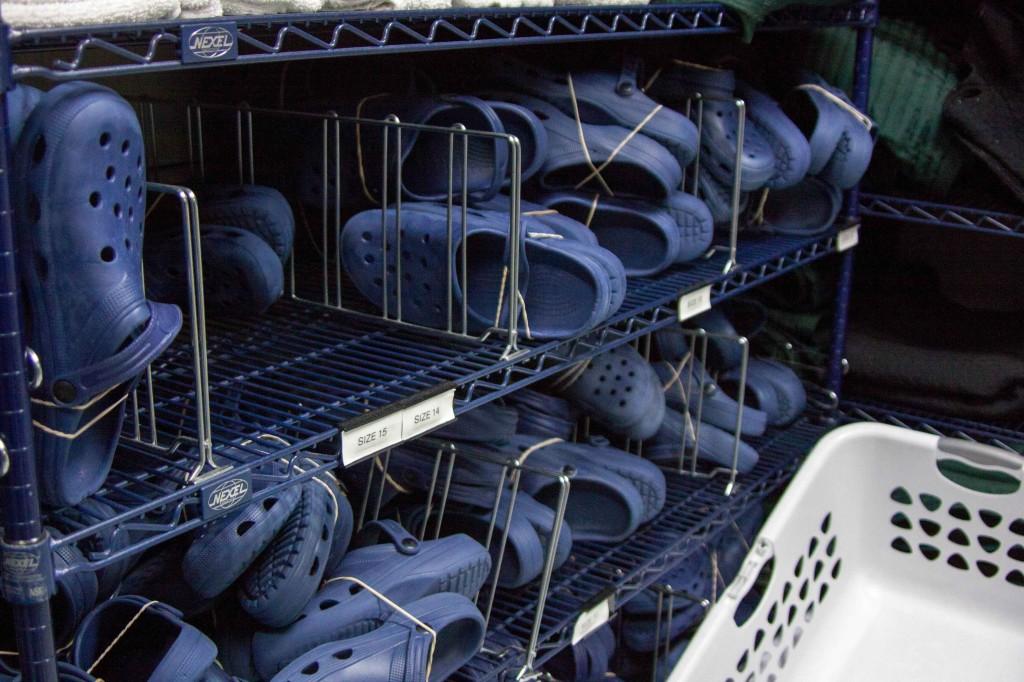
The Routine
Although the average age is lower and the duration of the stay is shorter, the juvenile detention center is no less strict than normal jail. Juveniles wake up at 6:30 a.m. to brush their teeth, do physical training and eat breakfast.
“Physical training” or “PT” consists of stretches, 10 jumping jacks, 10 push-ups and 10 sit-ups. Other exercise opportunities arise later in the day, when inmates can play knock-out or do work-out videos. Games with an element of physical contact like one-on-one basketball are banned.
Taylor understands that this physical activity is necessary, “So you’re not like, lazy and being a bum.”
After PT, juveniles grab their silverware for breakfast. On days that USD497 schools are in session, meals are driven over from Lawrence High School’s cafeteria. During weekends, on snow days and during the summer, meals are delivered from Douglas County Jail.
“It’s like school food, but worse,” Taylor said. “It tastes like crap.”
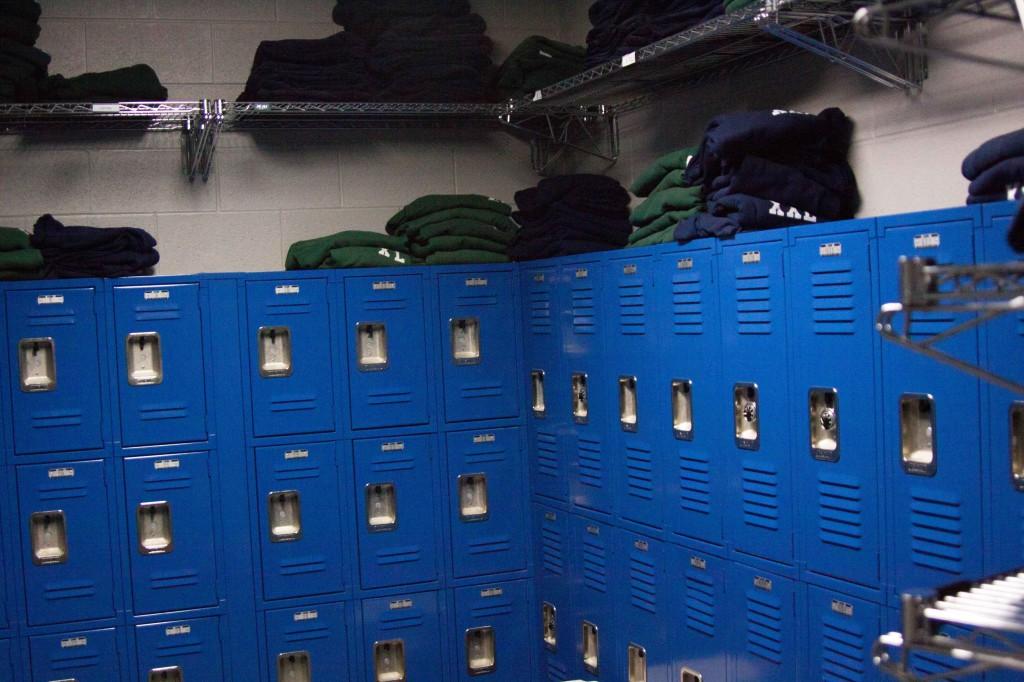
Day School
During the day, students attend one of the two educational programs housed at JDC, both staffed by certified USD 497 teachers.
One program is for detention center residents.
The other program is a day school program for kids who are suspended or truant. These students, who are from local school districts, are simply bussed to the JDC building for class. Generally, JDC teachers try to provide as much continuity with lesson plans as possible.
“We use the exact same textbooks, we’ll communicate with the teacher, kind of seeing where they [the students] were, what their grades were,” day school teacher Leah Henry said.
The day school typically educates around 15 students daily. Henry and her colleagues deal with all levels of learning.
“… I had a student who was in an AP class last semester, and so he did all of the work for that class from that teacher, and the teacher and I just worked together to provide the instruction,” Henry said.
The goal is to help students earn a transition back to regular school, by building study skills and becoming accustomed to attending class on a regular basis.
Unfortunately, electives are not offered at the detention center.
“I don’t know what electives you all have nowadays, but I know we don’t have a cooking class,” Crane said.
When students arrive at the day school facility each morning, they are required to change into provided sweatpants and t-shirts. Guards then pat them down to ensure no banned items enter the facility.
“They can’t even bring a pen,” Henry said. “We provide them with everything, and it’s just a security issue because … We go over there [to the detention side] and eat lunch; we go over there and have P.E., and so we can’t have all the stuff getting over there.”
Because JDC focuses on reform instead of strictly punishment like adult corrections, measures are taken to provide the juveniles with different programs to help them be successful in the future. Residents of the facility have access to substance abuse therapy, social skills groups and a religious program. Teachers at the day school fill out behavior evaluations each day, and students are required to maintain an 85 percent behavior score each week. Extended learning time is required for students who fail to keep up on their work.
“So if … a kid hasn’t met my expectations, … they stay until four o’clock, and I continue to work with them,” Hill said. “They get extended time, and it’s also kind of a consequence to help them.”
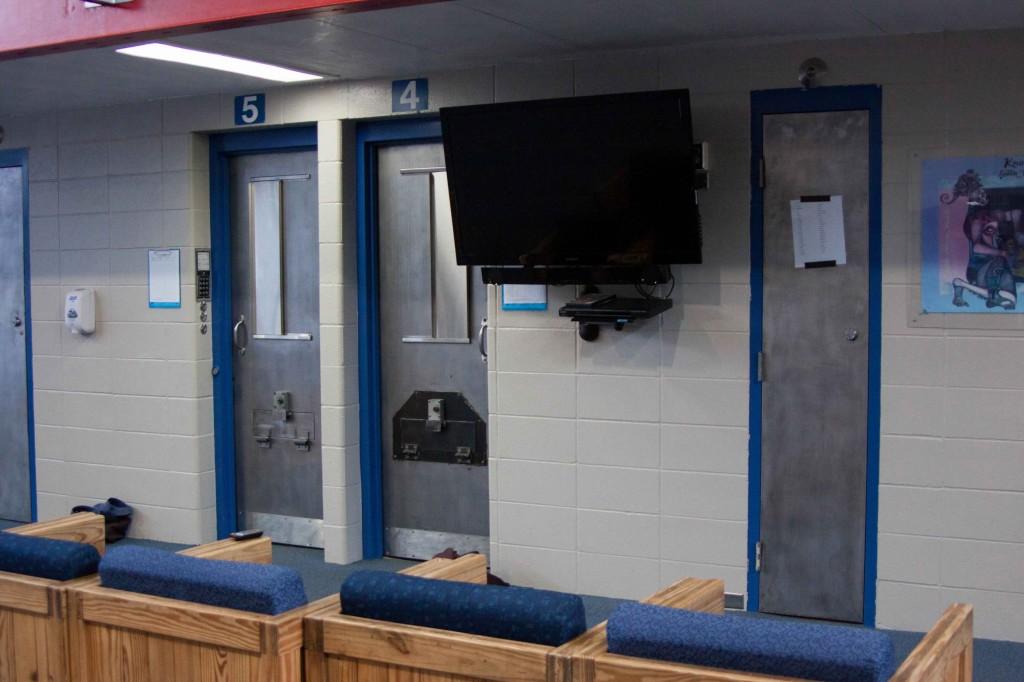
Token Economy
To promote responsibility and reward good behavior, JDC has a “token economy system,” in which juveniles earn or lose “money” based on how they conduct themselves. Chores, volunteer work and cleaning merit fake monetary rewards, while inappropriate actions are reprimanded with consequences and “fines.”
“If they’re doing good, their checkbook balance will be higher than a kids who’s doing bad,” Crane said.
The juveniles’ “checkbook balance” is also an indicator of what behavior “level” they’ve reached. “Level five” privileges include longer visits and phone calls, later bedtime and vending machine access.
“The highest level you can get up to is a trustee, which is like level 5. That’s when you can pretty much do whatever you want,” Taylor said.
Juveniles at level four and above are also allowed to have a pencil, paper and a radio in their room as opposed to the lower levels’ restricted in-room possessions: blankets, toilet paper and two books.
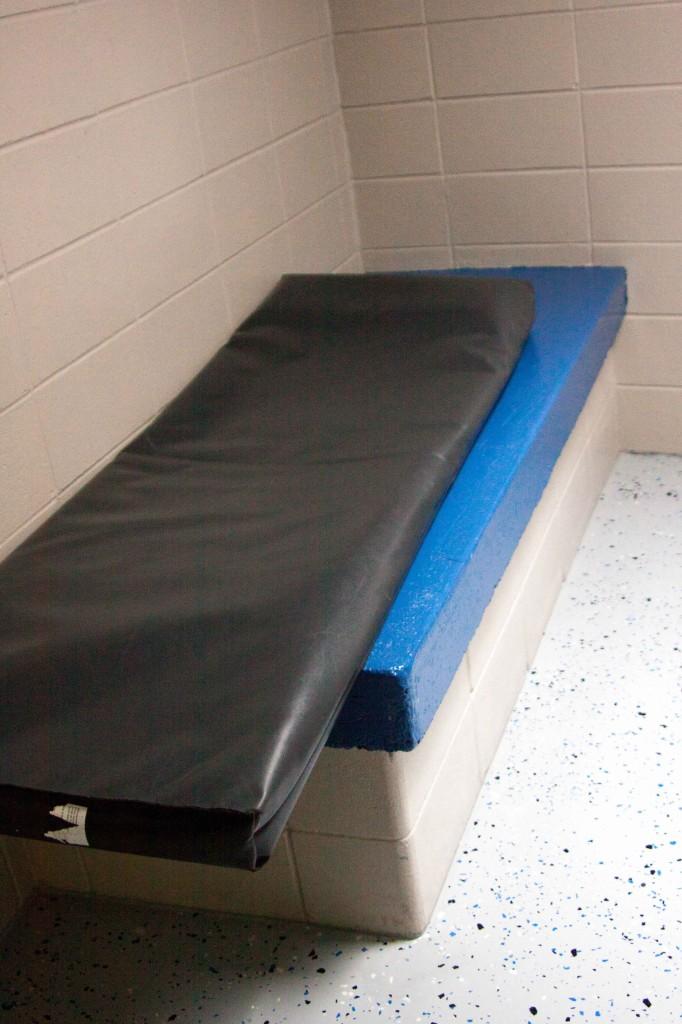
Roommates
While “no talking” is a rule at the center, some residents have roommates, depending on the severity of their offense. The roommate is randomly selected and isn’t there for companionship.
While JDC is a coed facility, generally more males are housed at the center than females. Crane has worked at the detention center for 14 years, and he reports that the number of female offenders has recently skyrocketed.
“I think [both genders] pretty much commit the same kind of crimes,” Crane said. “ A lot of it is fighting, battery, theft, stealing at Walmart or drugs.”
Suicide Watch
When a juvenile is first admitted to the facility, he or she is put on 24 hour suicide watch. Instead of dressing in the typical JDC juvenile attire, for the first day, the juvenile must wear a padded smock. A guard checks on the juvenile every four minutes when he or she is awake and every 15 minutes when he or she is asleep. If a juvenile is determined to be at risk of suicide, they are put on permanent “0-4” status, and guards continue to check on them at four minute intervals throughout their time detained.
“When they’re awake and the door’s secure, we check them every four minutes,” Crane said. “Your first four minutes of being oxygen-deprived [causes] brain damage.”
Unlike in a stereotypical prison movie, guards at JDC don’t isolate unruly juveniles for months on end. If a juvenile needs to be separated from other juveniles for behavioral reasons, he or she will be secured in a room, and a guard will view them every 15 minutes until he or she calms down.
Conclusion
Taylor is not interested in returning to JDC, and that’s the idea. Strict rules, a structured schedule and the “no talking” rule are designed to strongly discourage repeated visits.
Recidivism, or the rate of repeat offenders, has decreased dramatically for both probation and non-probation JDC residents since 2010. The 2013 probation violation recidivism rate is 18 percent, compared to the 2012 probation violation recidivism which was 26 percent. Non-probation violation recidivism in 2013 was only 5.4 percent.
“I was pissed when I went,” Taylor said. “I didn’t want to be there … I was mad. I mean, when I got out, I learned my lesson for getting in trouble, so I know I won’t be going back.”
*This junior student talked to the newspaper under the condition of anonymity to protect his identity. His name has been changed.


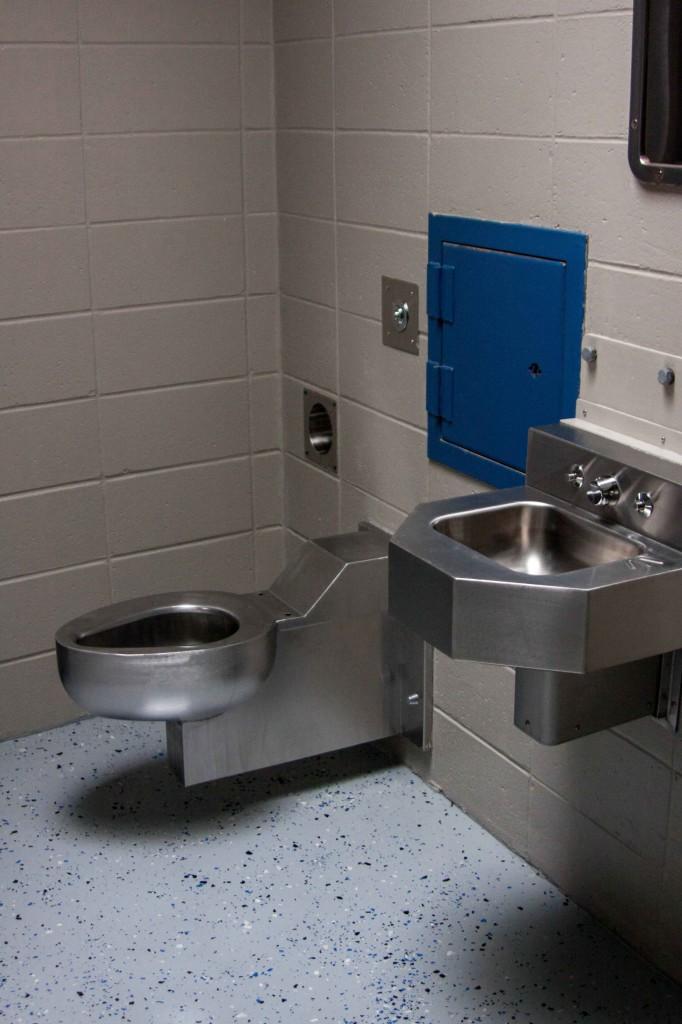
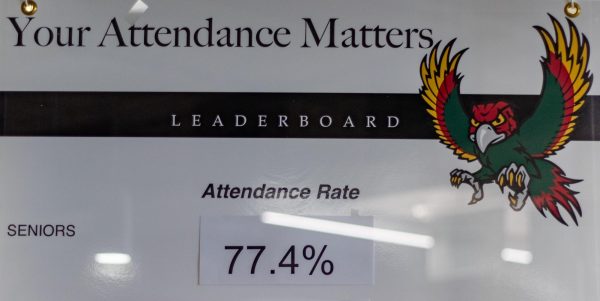











Ramon • Mar 6, 2014 at 2:04 pm
I was there a few weeks ago, it’s a really nice place. As long as your respectful and follow the rules it’s great. I made it to level 2 and had 60 bucks. The faculty are nice and funny at times. Had a blast there, I wanted to go back. Donate books they need more books. The food was actually good for school food, better than what we get at jcnhs.